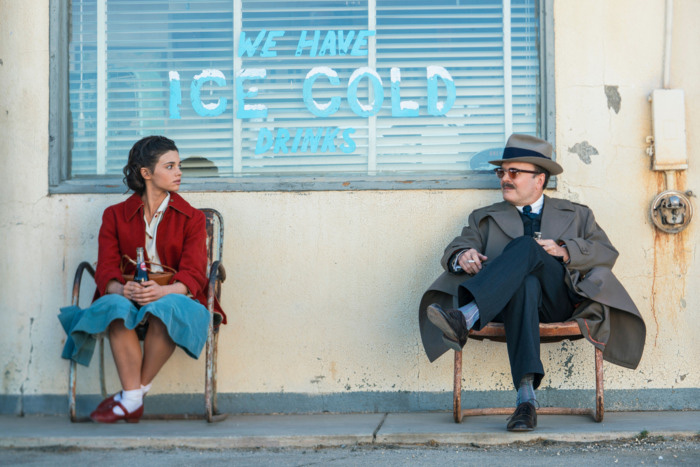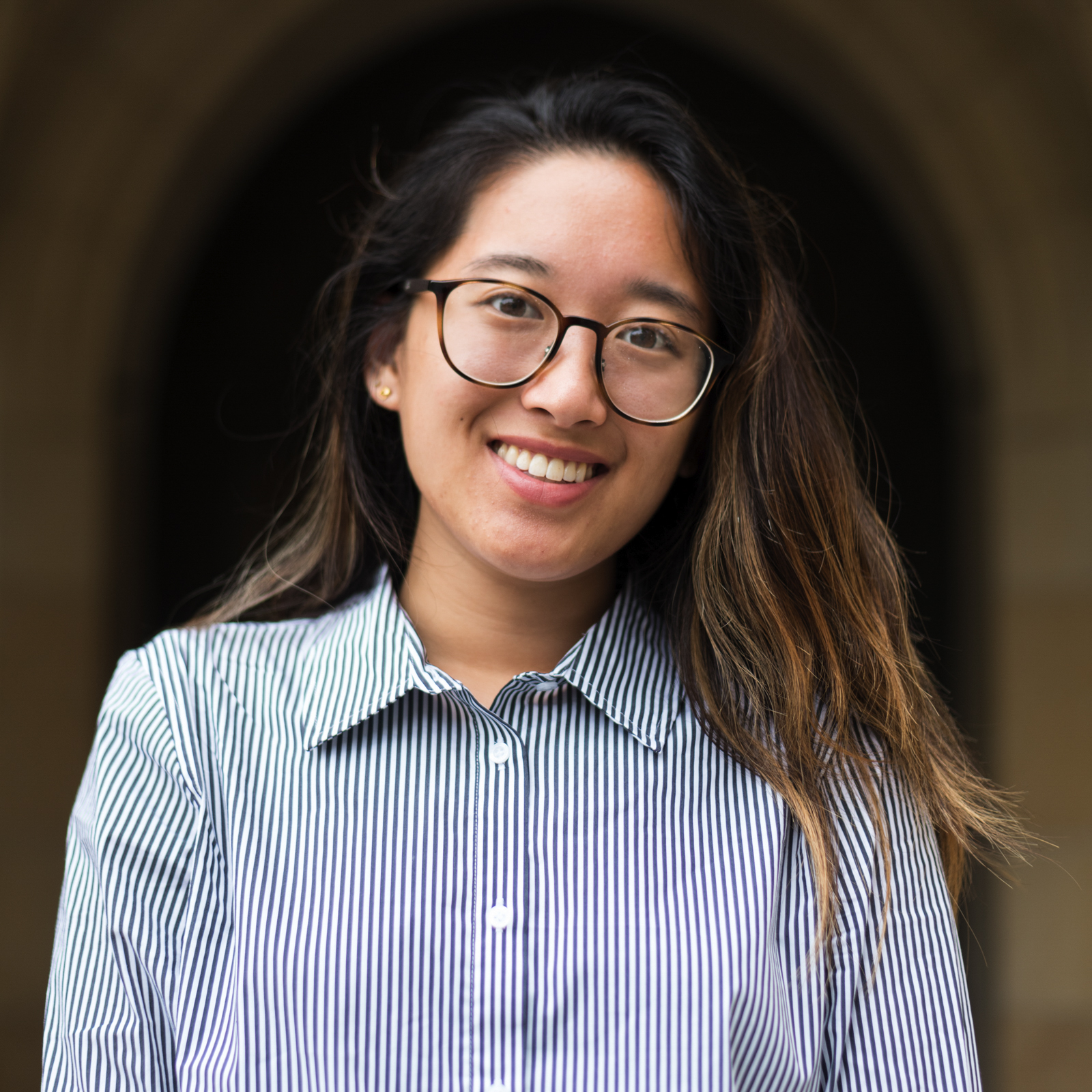Q&A: UCLA alumna dons thinking cap to overcome clothing challenges on TNT show

(Courtesy of Clay Enos/TNT)

By Paige Hua
March 3, 2019 10:38 p.m.
Designing costumes for TNT’s “I Am the Night” just kept getting weirder and weirder, Rhona Meyers said.
From Little Red Riding Hood coats to Masonic cuff links and last-minute Hawaiian print dresses, the UCLA alumna said designing for the miniseries was full of unexpected coincidences that tied reality to the show’s Black Dahlia era.
Meyers worked as the head of the costume department for the TNT miniseries, which stars Chris Pine as a ruined reporter and India Eisley as a woman whose history could help him reclaim Pine’s reputation. The duo move throughout Los Angeles in the late 1940s to the late 1960s in order to solve the infamous Black Dahlia murder. Costume design becomes the visual cue for these shifts in time as ’50s cardigan sweaters and full skirts transition into ’60s turtlenecks and A-line dresses, Meyers said. Directed by Patty Jenkins, the show’s season finale premieres March 4.
[RELATED: Costumes add depth to the diverse range of characters, settings this Oscar season]
Meyers spoke to the Daily Bruin’s Paige Hua about the costume design process, its unexpected coincidences and the creative control a designer has on set.
Daily Bruin: What kind of research did you do before creating costumes for this show?
Rhona Meyers: “I Am the Night” is a period piece, but not only is it period, it’s also based on somebody’s life. When I first researched for that project, I looked at Fauna Hodel (Eisley), and I tried to find what I could find about her and what I could find about her father. That was the beginning of my research. The next thing I did was research 1965 Los Angeles, the Watts Riots, African-American communities and civil rights. That’s why at the beginning of the show we were in Sparks, Nevada, in the 1950s, so that you could see when Fauna goes to LA, it’s quite different. Then, because we were just leaving the Hodel clan in the 1940s, I researched surrealism and the “glamorous ’40s.” And that led to a lot of art, surrealist art, and artists like Man Ray, Dalí, Schiaparelli, which led to Anna May Wong and Grace Kelly and beat poets and Audrey Hepburn in the ’60s. There was a very, very diverse amount of research.
DB: With all the intricacies involved with the costumes, how did each city reflected differently in them as the characters moved from Nevada to Los Angeles?
RM: Patty Jenkins wanted to keep Sparks as a small town that was left behind in time. We did Sparks with a sort of 1950s vibe. More prim and proper with full skirts and cardigan sweaters, little bobby socks, that kind of thing where they haven’t quite caught up to the ’60s yet. So that when Fauna moves to LA, she gets a big awakening when she sees the new styles in Los Angeles.
DB: Was there a specific part of the costume where you thought to yourself, “This is exactly what reflects the character’s personality?”
RM: There’s not anything absolutely specific, but there were quite a few coincidences that happened during the show. For instance, Fauna’s red coat. I had gotten that coat, and for some reason I was like, “She needs to wear that coat.” And then later on, I met Fauna’s daughter. She was on set telling a story about when she was 3 years old, and Jimmie Lee, who was drunk and yelling at her, kicked her out of the house. She left with this red jacket not knowing where she was going. She said, “I felt like Little Red Riding Hood.” And I asked her if she knew that Fauna’s main coat is a red coat and at one point it had a hood, but we had taken it off. It’s like a Little Red Riding Hood coat, and we were just astounded.
DB: And that was a coincidence?
RM: Yeah, because I didn’t find that out until way later. We had already started shooting, and we had already shot the coat. Here’s another thing that happened. We were looking online for little accessories, tie clips, cuff links, stuff for George Hodel. At one point, I thought to myself: George Hodel is a Mason. I had no idea if he is or not, but I just had that feeling because he did this ritualistic kind of stuff, so must be involved with high-level Hollywood people, very protected by the police and everything. We then looked online to see if we could find some Masonic stuff, and we found (someone) selling an old wooden box of vintage tie clips, cuff links. They were all Masonic with the initial H. It got weirder and weirder.
[RELATED: Alumna uses costume design to craft characters’ auras in ‘American Horror Story’]
DB: Were there any challenges specifically that you can remember with “I Am the Night”?
RM: In this show, we were so busy up until almost the very bitter end. It was so challenging having to build all these clothes. We had 24 hours to buy all the fabric, get it to all the makers, get all the stuff for the next cast of characters coming up and do all our fittings. Then, one day Sam Sheridan, the showrunner, came up to me on set and requested to see Fauna in a Hawaiian dress for when she goes to Hawaii. So, I looked at the schedules and I was like “Sam, that schedule is working tomorrow.” After a quick research online, we found that we couldn’t get any vintage Hawaiian fabric to come in from somewhere else, couldn’t find any vintage Hawaiian fabric in yardage that was local. Then, I just remembered every time I would go into a vintage store, I would hoard vintage fabric. So, I found one piece of fabric that I had gotten from Jet Rag that was enough for two dresses amazingly. It wasn’t quite Hawaiian, but it worked, I thought, better than Hawaiian print. But there were challenges like that all the time.
DB: Is this a process you have a lot of creative control over?
RM: Most of the time, I have had a lot of creative control over it. But there is input always. The director has an idea, the actors have an idea. It’s a very collaborative process and that’s the beauty of film. It’s all collaborative. You work with the production designer, you have to work within the color palette, you have to work within the story, you have to work within creating each character.


